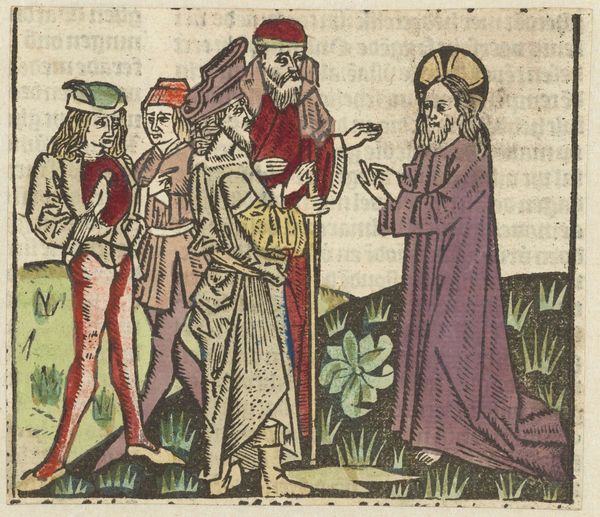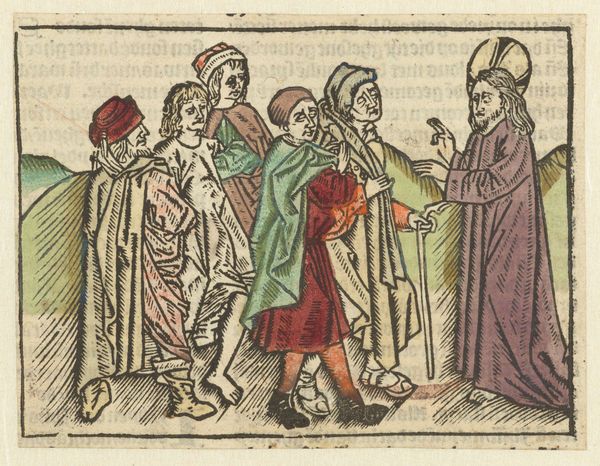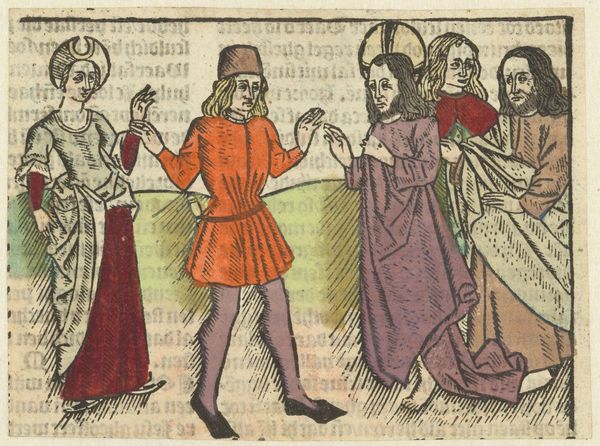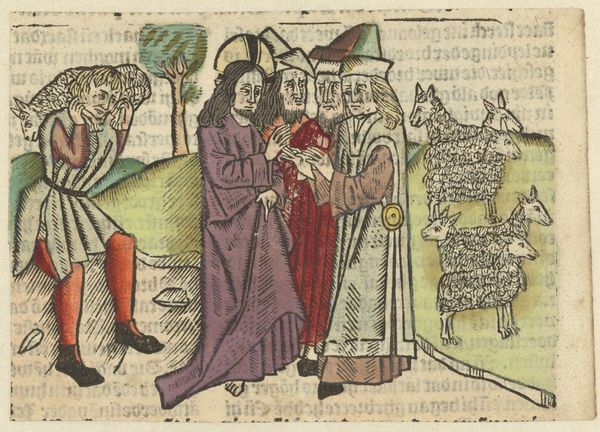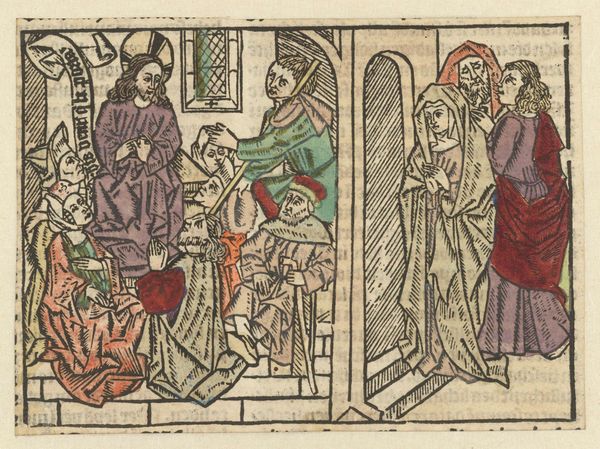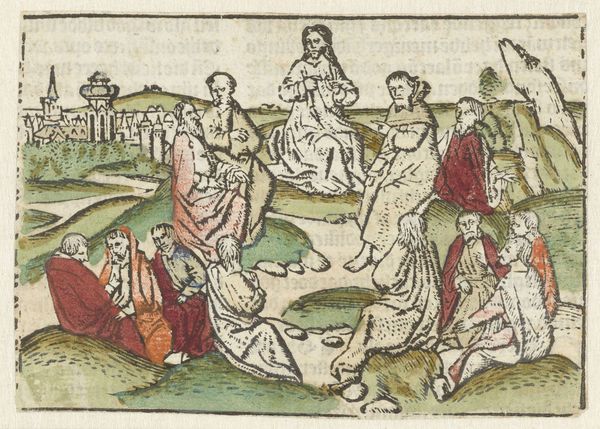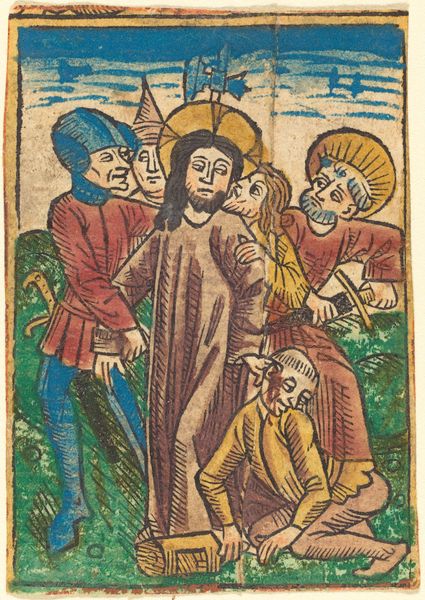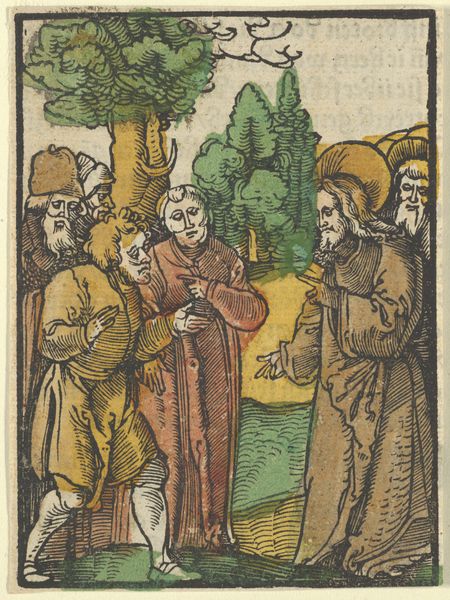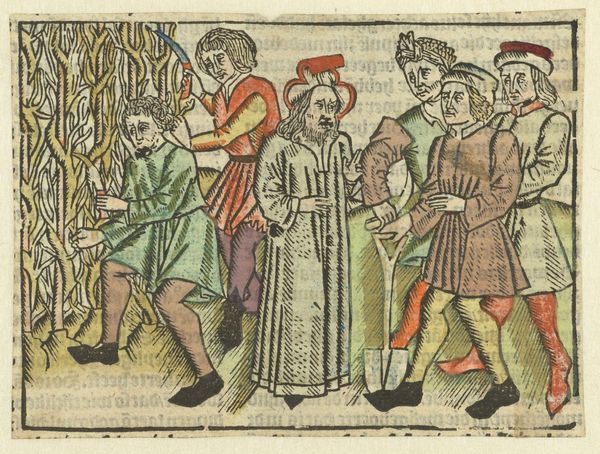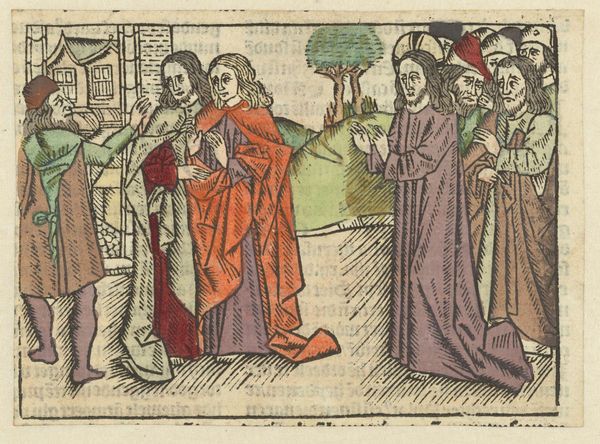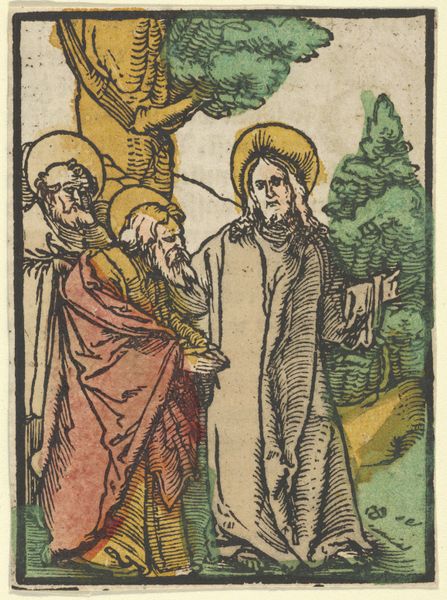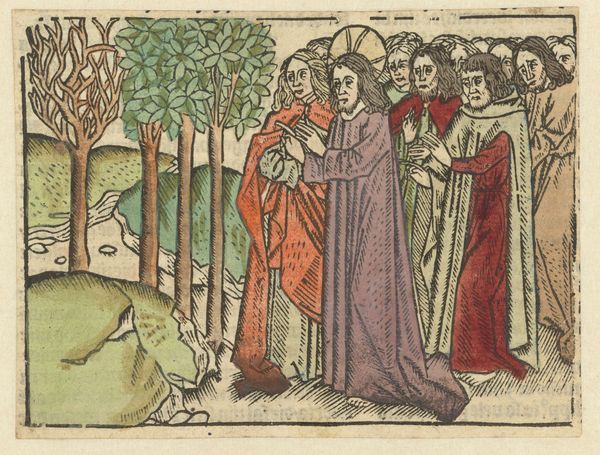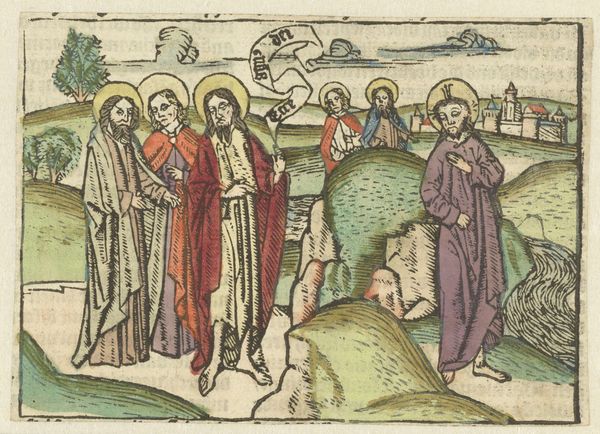
print, woodcut
narrative-art
figuration
woodcut
northern-renaissance
Dimensions: height 90 mm, width 123 mm
Copyright: Rijks Museum: Open Domain
Editor: Here we have a woodcut, likely from around 1485 to 1491, titled *The Disciples Plucking Grain on the Sabbath* by the Master of Antwerp. I'm really struck by how the figures are presented so starkly against the text. What's your interpretation of this work? Curator: I'm immediately drawn to the labor embedded within the production of this image. It's a woodcut, a relief printing technique. Consider the artist, painstakingly carving away wood to create this matrix. Notice the textural variations. Look at the linear pattern of the mark making, which suggests both the forms of figures as well as creates the composition. Also, the starkness you noted. Don't you think it challenges traditional notions of high art by foregrounding process? Editor: Definitely. And thinking about the context of printmaking, this image was likely reproduced multiple times, making it more accessible to a wider audience than, say, a painting. So, is that a factor to consider here too, the accessibility aspect and the democratisation of religious stories? Curator: Absolutely! Think about the materiality itself—the wood, the ink. The way these humble materials are employed to disseminate a biblical story shifts our focus from the purely spiritual to the tangible and the economic. How do the ethics of consumption factor into your understanding? Editor: So it's almost as if the artwork's own materiality and production mirror the act depicted, this act of collecting food? In some ways making what the establishment considers an immoral act –plucking grain from land- a symbol for wider availability of information by using cheaper materials that create many versions. Curator: Precisely! By analyzing the process, the materials, and the social context, we can uncover how this woodcut complicates the boundaries between labor, spirituality, and consumption. It's about making the sacred accessible. Editor: That's really given me a new perspective on it. Thanks so much. I’ll never see prints in the same way. Curator: The beauty of art history! There’s always more to uncover when we focus on how things are made and for whom.
Comments
No comments
Be the first to comment and join the conversation on the ultimate creative platform.
